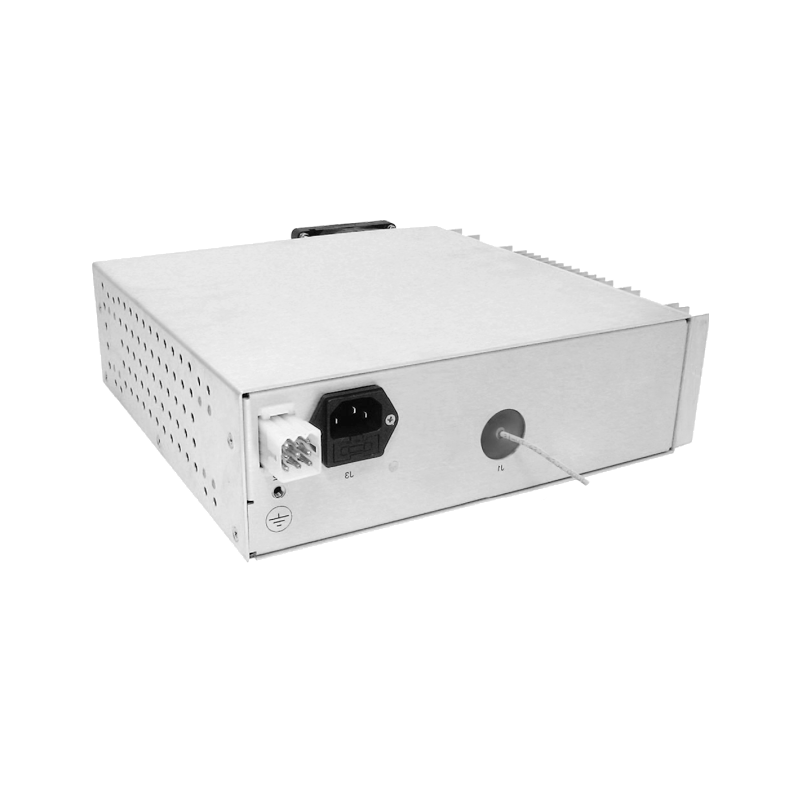Technical Analysis of High-Frequency High-Voltage Power Supplies in Nanomaterial Synthesis
In the field of nanomaterial synthesis, the microstructure and properties of materials highly rely on the precise regulation of energy input. High-frequency high-voltage power supplies, with their unique energy output characteristics, play a central role in nanomaterial synthesis processes such as arc discharge, plasma-enhanced chemical vapor deposition (PECVD), and electrospray. This article delves into the key technologies and application values of high-frequency high-voltage power supplies, starting from the technical requirements of nanomaterial synthesis.
1. Technical Requirements of Nanomaterial Synthesis for High-Frequency High-Voltage Power Supplies
During nanomaterial synthesis, the aggregation behavior of atoms or molecules is extremely sensitive to the frequency and intensity of energy. For instance, in the preparation of carbon nanotubes by arc discharge, a pulsed electric field with a frequency of 10 100kHz and a voltage of several thousand volts needs to be generated between electrodes by a high-frequency high-voltage power supply, causing the electrode material to evaporate and rapidly condense into nanostructures in a plasma environment. This requires the power supply to have the following characteristics: First, the frequency stability error should be controlled within ±0.1% to avoid uneven size distribution of nanoparticles due to frequency fluctuations. Second, the voltage ripple should be less than 0.3% to ensure the uniformity of plasma density. Third, the pulse rise time should be shorter than 1μs to achieve instant high-energy injection, meeting the kinetic conditions for the rapid nucleation and growth of nanomaterials.
2. Core Technical Realizations of High-Frequency High-Voltage Power Supplies
1. High-Frequency Inverter Technology
High-frequency high-voltage power supplies adopt a full-bridge phase-shifted soft-switching inverter topology, realizing high-frequency power conversion through IGBT or SiC power devices. This structure uses a resonant network to enable the power devices to switch under zero-voltage or zero-current conditions, increasing the conversion efficiency to over 95% while reducing switching losses and electromagnetic interference. Combined with the digital phase-locked loop (PLL) technology, the output frequency stability can be improved to ±0.05%, meeting the stringent requirements of nanomaterial synthesis for frequency stability.
2. High-Voltage Modulation and Voltage Regulation Technology
To achieve precise energy control, the power supply employs a composite modulation strategy combining pulse width modulation (PWM) and pulse frequency modulation (PFM). The FPGA controller adjusts the duty cycle and frequency in real-time, responding to process parameter changes within milliseconds. Meanwhile, an adaptive PID feedback control algorithm, combined with high-precision Hall current sensors and resistive voltage dividers, controls the output voltage fluctuation range within ±0.2%, ensuring the stability of the nanomaterial synthesis process.
3. Electromagnetic Compatibility Design
Nanomaterial synthesis equipment is highly sensitive to the electromagnetic environment, so high-frequency high-voltage power supplies require comprehensive electromagnetic compatibility (EMC) design. At the hardware level, a double-layer shielding structure and a π-type LC filter network are used to increase the common-mode interference suppression ratio to over 60dB. At the software level, the dead-time and rise/fall slopes of the PWM waveform are optimized to reduce high-frequency harmonic components. Experimental data shows that the processed power supply can reduce the electromagnetic radiation intensity around the equipment to below 10μV/m, avoiding interference with the nanomaterial synthesis process.
3. Analysis of Typical Application Scenarios
In the PECVD process for preparing nanofilms, high-frequency high-voltage power supplies provide a 13.56MHz radio-frequency excitation for the reaction chamber. By precisely controlling the plasma density and the energy of active particles, the film growth rate can be accurately regulated (error < ±3%) and the internal stress of the film can be reduced. In the electrospray synthesis of nanoparticles, the high-frequency high-voltage pulses (frequency 5 50kHz, voltage 5 30kV) output by the power supply can stabilize the Taylor cone shape, making the standard deviation of the nanoparticle size distribution less than 10nm and significantly improving material uniformity.
As nanomaterials evolve towards functionalization and compositing, high-frequency high-voltage power supplies will further develop towards higher frequencies (>100MHz) and higher precision (voltage control accuracy ±0.1%). The integration of artificial intelligence algorithms to achieve adaptive optimization of power supply parameters will provide strong technical support for the innovation of nanomaterial synthesis processes.




















